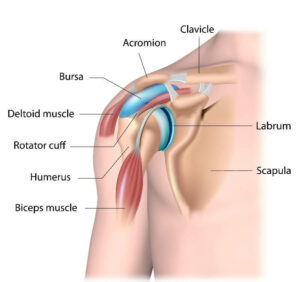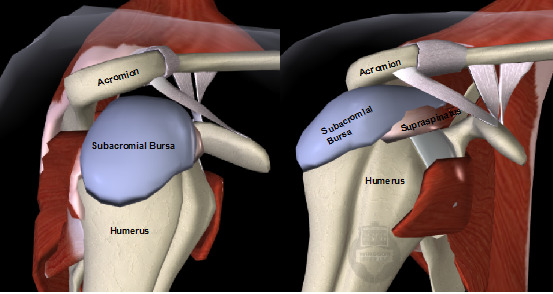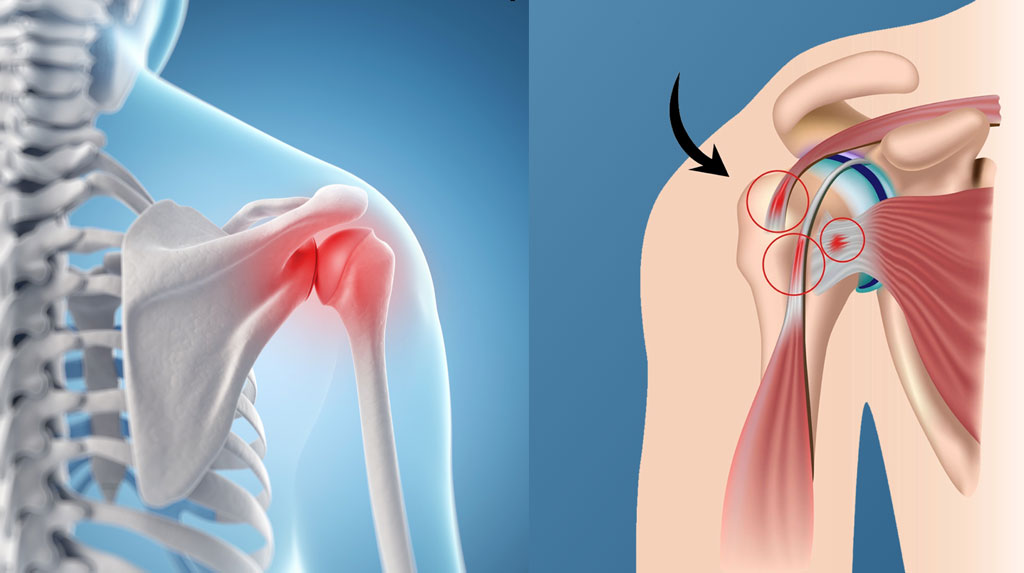If you are experiencing shoulder pain, you may have shoulder impingement. This condition is caused when the rotator cuff muscles and tendons become trapped under the bone on the top of your shoulder. In this blog post, we will discuss what causes shoulder impingement, how to diagnose it, and the treatment options available.
Contents
What Is Shoulder Impingement?

Shoulder impingement is a condition in which the rotator cuff tendons and bursa (fluid-filled sac) become irritated or inflamed as they rub or “impinge” against the shoulder blade. The condition is also called swimmer’s shoulder, pitcher’s shoulder, and thrower’s shoulder.
The rotator cuff is a group of four muscles and their tendons that attach the shoulder blade to the upper arm bone. These muscles help lift your arm. The bursa is a fluid-filled sac that lubricates and cushions the rotator cuff tendons as they move over the shoulder joint.
Shoulder impingement can occur when these structures are not able to move smoothly underneath the acromion (the bony projection at the top of the shoulder blade). This can happen due to a buildup of calcium deposits, inflammation, or a change in the shape of the acromion.
Shoulder impingement is a common condition that can cause pain and reduced range of motion in the shoulder. The condition is especially common in athletes who participate in overhead activities such as swimming, baseball, and tennis.
Treatment for shoulder impingement often includes a combination of rest, ice, and physical therapy. Surgery may be necessary in some cases.
What Causes Shoulder Impingement?

Several factors can contribute to shoulder impingement:
Repetitive Overhead Motions
This is the most common cause of shoulder impingement. Activities that require repetitive overhead motions, such as swimming, baseball, and tennis, can irritate the rotator cuff tendons and bursa.
Impingement can also occur in people who do not participate in overhead activities but who perform other repetitive movements that put stress on the shoulder, such as painting or raking.
Age-Related Changes
As you age, the bones and soft tissues in your shoulder joint can change. The acromion may become more curved or crooked, which narrows the space for the rotator cuff tendons and bursa. This condition is called acromion spurring.
Sometimes, the tendons of the rotator cuff can begin to fray and wear down with age. This condition is called rotator cuff tendonitis.
Injury or Trauma
A fall or direct blow to the shoulder can injure the rotator cuff tendons and bursa, leading to impingement. These injuries or traumas are most likely to occur in athletes who participate in contact sports, such as football or hockey.
Diseases and Conditions
Certain diseases and conditions, such as arthritis, can lead to shoulder impingement. Arthritis in the shoulder joint can cause changes in the shape of the acromion, which narrows the space for the rotator cuff tendons and bursa.
What Are the Symptoms of Shoulder Impingement?
The most common symptom of shoulder impingement is pain. The pain may be mild at first but can become more severe over time. The pain is often worse with overhead activities or when reaching behind your back. Other symptoms of shoulder impingement include:
Weakness In The Arm
One of the main symptoms of shoulder impingement is weakness in the arm. This weakness may make it difficult to lift your arm or perform other overhead activities.
Pain At Night
Shoulder impingement can also cause pain at night. The pain may wake you up and make it difficult to fall asleep again.
Reduced Range Of Motion
Shoulder impingement can limit your range of motion. You may have difficulty reaching behind your back or lifting your arm above your head. Also, your shoulder may feel stiff and painful when you try to move it.
Diagnosing Shoulder Impingement
Your doctor will ask about your medical history and symptoms. They will also perform a physical exam, during which they will assess your range of motion and check for tenderness or pain in the shoulder.
Imaging tests, such as X-rays, MRIs, or CT scans, may also be used to diagnose shoulder impingement. These tests can help your doctor see any changes in the bones or soft tissues of the shoulder joint.
The diagnosis of shoulder impingement is often made based on your symptoms and physical exam. However, imaging tests may be ordered to rule out other conditions, such as a rotator cuff tear or arthritis.
How Is Shoulder Impingement Treated?

Treatment for shoulder impingement often includes a combination of rest, ice, and physical therapy. Surgery may be necessary in some cases.
Rest
Rest is often the first line of treatment for shoulder impingement. Avoiding activities that aggravate your symptoms will give your shoulder time to heal. Your doctor may also recommend that you take over-the-counter pain relievers, such as ibuprofen, to help reduce pain and inflammation.
Ice
Applying ice to the affected shoulder can also help reduce pain and inflammation. Ice should be applied for 20-30 minutes at a time, several times a day.
Physical Therapy
Your doctor may refer you to a physical therapist to help improve your range of motion and strengthen the muscles around the shoulder joint. A physical therapist can also teach you exercises to help prevent shoulder impingement in the future.
Surgery
In some cases, surgery may be necessary to treat shoulder impingement. Surgery is typically reserved for people who have failed to respond to conservative treatment methods, such as rest, ice, and physical therapy. Some of the most common surgeries used to treat shoulder impingement include:
Arthroscopic Decompression
Arthroscopic decompression is a minimally invasive surgery that involves making small incisions in the shoulder joint. A tiny camera, called an arthroscope, is inserted into the shoulder joint. The surgeon then uses surgical instruments to remove any tissue that is pinching the rotator cuff tendons or bursa.
Arthroscopic Subacromial Decompression (ASD)
ASD is a type of arthroscopic decompression surgery that specifically targets the area under the acromion. In this procedure, the surgeon removes a small portion of bone and soft tissue from under the acromion. This helps to create more space for the rotator cuff tendons and bursa.
Shoulder Impingement Prevention
There are several things you can do to help prevent shoulder impingement:
Maintain Good Posture
Poor posture can lead to shoulder impingement. Be sure to stand up straight and avoid slouching.
Avoid Overhead Activities
Activities that require you to lift your arms over your head can aggravate the symptoms of shoulder impingement. If possible, avoid these activities or take breaks often to rest your shoulder.
Strengthen The muscles Around The Shoulder Joint
Strong muscles help support the shoulder joint and can help prevent impingement. Be sure to include exercises that target the rotator cuff muscles in your workout routine.
Wear The Right Shoes
Wearing shoes with good arch support can help reduce strain on the muscles and tendons around the shoulder. This can help prevent shoulder impingement.
Conclusion
Shoulder impingement is a common condition that can cause pain and other symptoms. It occurs when the tendons or bursa in your shoulder are irritated or inflamed. Treatment typically involves rest, ice, and physical therapy. Surgery may be necessary in some cases. If you think you may have shoulder impingement, talk to your doctor.
Sometimes shoulder impingement can be caused by an underlying condition, such as a rotator cuff tear or shoulder arthritis. Treating the underlying condition may help relieve symptoms of shoulder impingement.
Physical Therapy help patients recover from pain. If you’re experiencing Back pain, Shoulder pain, Knee pain, Neck pain, Elbow pain, Hip pain, or Arthritis pain, a physical therapist at MantraCare can help: Book a physiotherapy session.


